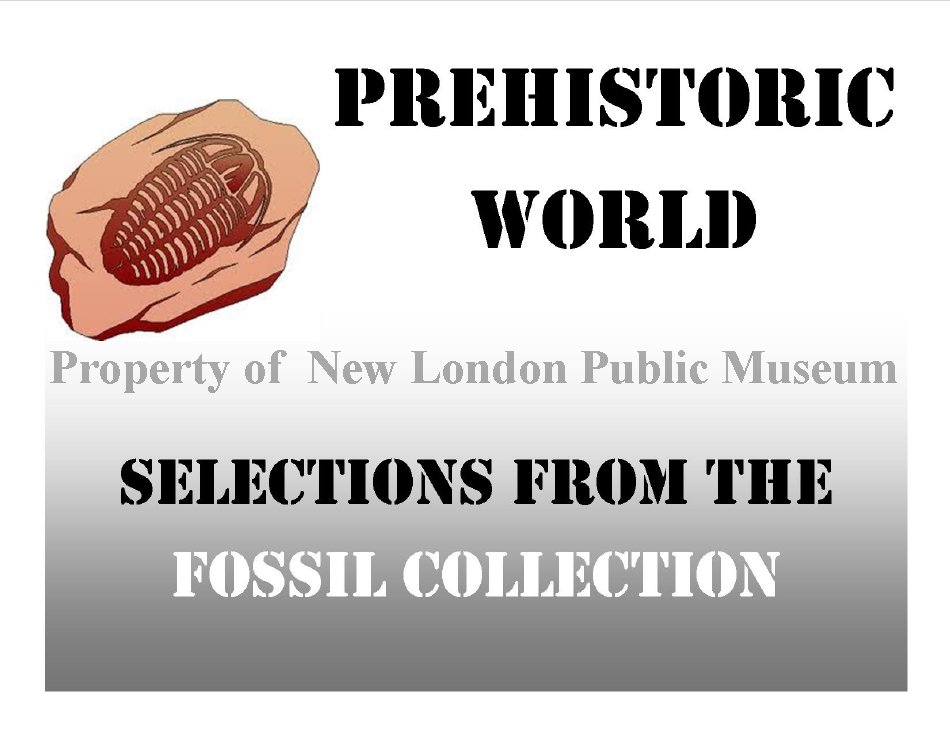The New London Public Museum presently houses more than 600 fossil specimens from across the United States. Fossils are the preserved remains of prehistoric life. The vast majority of the collection here in New London is marine invertebrate fossils. This exhibit will provide a sneak peek into this massive collection that is not currently on display.
Fossils can be preserved in a variety of ways, several of which will be seen in this virtual exhibit.
Carbonization
Most often seen in the preservation of plants. The plant is buried at depth and subject to massive pressure. The resulting compression and heat causes the hydrogen, oxygen, and nitrogen to be forced out and away from the specimen as a gas. This leaves behind a thin film of carbon that retains a two dimensional image of the original plant.
Permineralization
One of the most commonly identified methods of fossilization occurs when a naturally porous material such as bone or wood becomes filled with a hard material such as calcium carbonate. This occurs when the buried animal or plant is exposed to flowing underground water that is rich in minerals. These minerals precipitate out in the porous material. Eventually the minerals fill the porous space and harden, creating a fossil.
Replacement and Recrystallization
These methods are common and are usually associated with similar fossils. Replacement processes are similar to permineralization and molds, in that the original material, such as a shell, begins to degrade over time and is replaced with a mineral not associated with organic material, such as pyrite (more commonly called Fool's Gold). The shape of the organism's hard parts are maintained, but the composition of the fossil is not the same as when the organism was alive.
Recrystallization is a process more commonly associated with invertebrate shells, such as clams, corals and other shelled organisms. The hard part composition is unstable and after burial the composition begins to weaken changing from one form of mineral into another. An example is a shell composition changing from the less stable calcium rich aragonite into the more stable calcium rich calcite, of which many fossil shells are comprised.
Preservation of Original Materials
This method of fossilization exhibits exactly how it sounds. The rapid burial of organic material in an anoxic (low oxygen) environment prevents the degradation of organic material. Without enzymes, bacteria or other animals removing the remains, original material is left to be preserved in the fossil record. And without water or exposure to other erosive material, minerals cannot precipitate within porous structures, and recrystallization or replacement of materials cannot occur.
Casting and Molding
While carbonization and Petrification both preserve the original organism, casting and molding preserved indirect evidence that the organism existed. In casting and molding the original organism is not preserved. Instead loose sediment is deposited around the organism such as a snail. The body of the snail decays but the shell remains. The sediment hardens and when the shell eventually breaks down the hardened sediment remains and serves as an impression of the original shape of the shell.
**Collecting of fossils should be done with great care and correct authority. Ideal fossil specimens are those that include a great deal of information about where they are found, both geographically and geologically, what was found with them and who discovered the fossil. Please be aware that collecting is also subject to local and federal laws and can be illegal if done without permission. If there are any questions regarding the collecting of specimens, please contact the Wisconsin Geological and Natural History Survey at the University of Wisconsin-Madison or the Bureau of Land Management.
